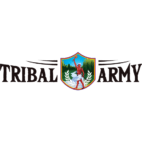Introduction
Have you ever wondered about the uniqueness of tribal and indigenous communities? Well, these societies, often overlooked in our fast-paced, modern world, possess rich and diverse cultures, practices, and ways of life. This article dives deep into understanding these two types of communities. Sit back, relax, and let’s unravel the intricacies of these societies, shall we?
The Concept of Tribal Communities
Tribal Communities: Historical Overview
Tribal communities trace their origins back to the dawn of human civilization. They’ve sustained themselves through hunting, gathering, and small-scale farming, maintaining their cultures despite modernization, and ever wondered about their survival tactics? A deep-rooted sense of community, perhaps?
Critical Characteristics of Tribal Communities
Community Structure
Tribal communities often follow a distinct social hierarchy. Like a well-woven tapestry, this structure binds each member in harmony, with every role clearly defined. It’s intriguing how each individual’s responsibilities contribute to the community’s survival and prosperity.
Cultural Practices
The richness of tribal cultures lies in their customs, rituals, and practices, preserved over centuries. These practices are often deeply tied to nature, reflecting the tribes’ respect and reverence for the environment. Can you imagine how different our world could be with such a symbiotic relationship with nature?
Understanding Indigenous Communities
Indigenous Communities: Historical Overview
Indigenous communities, spread across the globe, have histories that span thousands of years. They have a profound connection to their ancestral lands, almost like an unbroken bond stretching across generations. Picture a tree rooted deep into the earth. Don’t you think this analogy is fitting?
Key Characteristics of Indigenous Communities
Connection to the Land
One of the most striking characteristics of indigenous communities is their intimate connection to the land. Like a bird’s innate ability to navigate vast distances, this relationship shapes its identity, culture, and survival strategies. It’s fascinating, right?
Cultural Practices and Beliefs
Indigenous communities possess unique cultures and belief systems that revolve around the natural world. Like meticulously crafted masterpieces, these societies have intricate designs of knowledge, languages, and traditions. Doesn’t this paint a vivid tapestry of human diversity?
Comparing Tribal and Indigenous Communities
While there are many similarities between tribal and indigenous communities, including a solid connection to nature and unique cultural practices, there are also significant differences. These differences arise from various factors such as geographical locations, historical contexts, and interactions with other societies. It’s like comparing two different ecosystems, each with its unique flora and fauna.
The Role of Tribal and Indigenous Communities Today
In today’s globalized world, tribal and indigenous communities continue to play vital roles. They safeguard biodiversity, combat climate change, and preserve cultural heritage. Isn’t it amazing how these societies, often in the peripheries of modern consciousness, are central to our planet’s future?
Conclusion
In conclusion, tribal and indigenous communities, with their distinctive identities, rich cultures, and deep connections to nature, offer valuable insights into humanity’s diverse ways of life. These societies, like hidden gems in a vast landscape, embody the incredible richness of our world. So, isn’t it time we appreciated these communities’ irreplaceable contributions?
FAQs
1. What defines a tribal community? A tribal community is typically determined by its unique cultural practices, community structure, and often a shared geographic location.
2. How are indigenous communities different from tribal communities? Indigenous communities are usually characterized by a profound connection to their ancestral lands, unique cultures, and belief systems. The differences largely stem from historical contexts, geographical locations, and societal interactions.
3. Why are these communities important today? These communities play crucial roles in biodiversity conservation, combating climate change, and preserving cultural heritage.
4. Do these communities interact with the modern world? While they maintain their traditional ways of life, they also interact with the contemporary world, often advocating for their rights and cultural preservation.
5. How can we support tribal and indigenous communities? Support can range from advocating for their rights and acknowledging their contributions to supporting their efforts to preserve their cultures and environments.




















